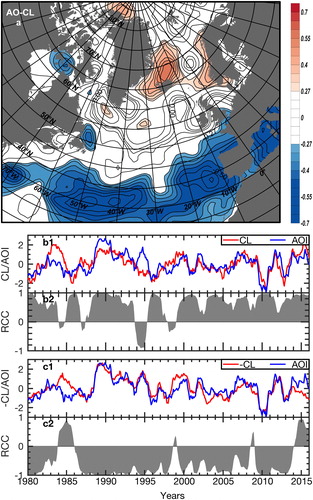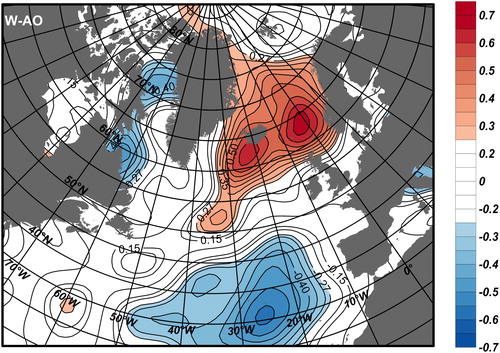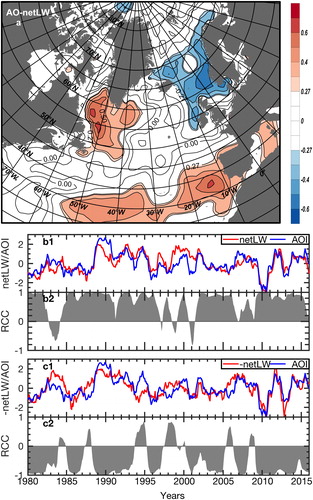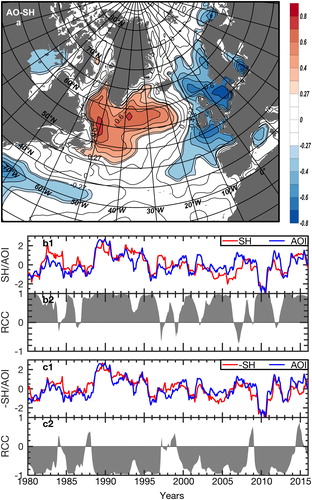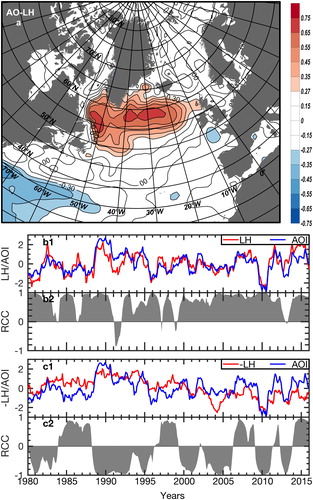Figures & data
Fig. 1. Multiyear averaged monthly heat fluxes in winter (January) and summer (August). (a) Net short-wave radiation (left: January; right: August). (b) Net long-wave radiation (left: January; right: August). (c) Sensible heat flux (left: January; right: August). (d) Latent heat flux (left: January; right: August).
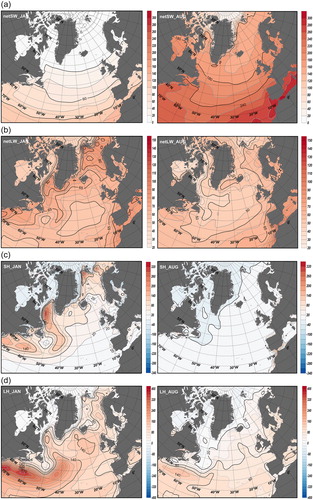
Fig. 2. Correlation between net short-wave radiation and the AOI. (a) Spatial distribution of correlation coefficient with positive (orange) and negative (blue) HCRs. (b1) and (c1), are the normalised curves for AOI (blue lines) and the averaged net short-wave radiation anomalies (red lines) for positive and negative HCRs, respectively. The histograms show the RCCs for the positive (b2) and negative (c2) HCRs.
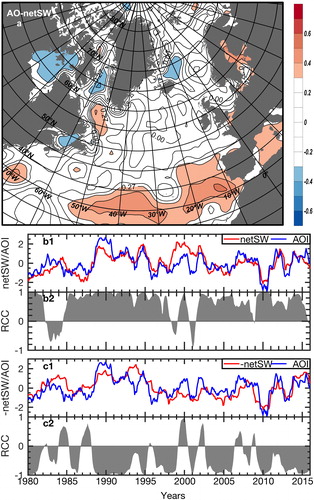
Fig. 3. The correlation between the downwelling short-wave radiation and cloud coverage. (a) The spatial distribution of correlation coefficient of gridded downwelling short-wave radiation and cloud coverage anomalies. The entire correlation field is negative. (b1) The normalised average downwelling short-wave radiation (red) and cloud coverage (blue) anomalies. (b2) The histogram of the RCC of downwelling short-wave radiation and cloud cover.
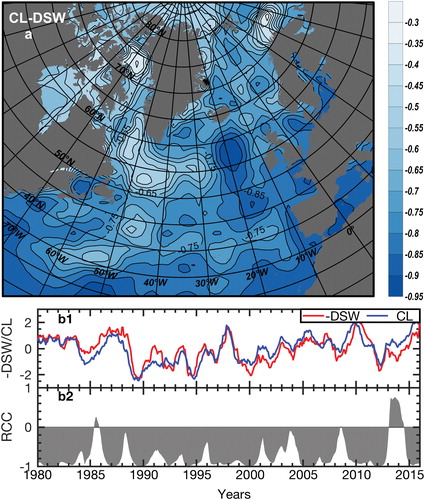
Fig. 7. The correlation as a function of lag between heat fluxes and the AOI for positive (a) and negative (b) HCRs, respectively. DSW and USW are downward and upward shortwave radiations, DLW and ULW are downward and upward long-wave radiations, SHF and LHF and for sensible and latent heat fluxes.

Fig. 11. (a) Sketch of Arctic Oscillation Positive Feedback Region (AOPFR). (b) Sketch of positive and negative feedback processes of surface heat fluxes to the AO. Pink and blue shaded scopes show positive and negative feedbacks, respectively. The abbreviated symbols are as follows. ‘AO’: Arctic Oscillation; AOPFR: Arctic Oscillation positive feedback region; ‘temp.’: temperature; ‘LW’: long-wave radiation; ‘SH’: sensible heat; ‘LH’: latent heat; ‘SLP’: sea level pressure; ‘
 ’: decrease.
’: decrease.

